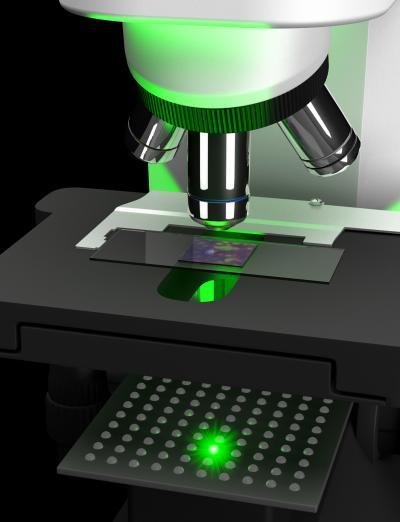Microscopy Market Advances Enabling High Resolution and AI-Driven Imaging Solutions

The microscopy market has experienced remarkable growth and transformation in recent years, driven by continuous innovations that enhance imaging capabilities, speed, and accessibility. As microscopy remains a cornerstone technology in fields ranging from biomedical research and material science to electronics and environmental studies, advancements are crucial for uncovering details at the micro and nanoscale that were previously unattainable. This article explores some of the key innovations shaping the microscopy market today and how they are influencing research and industry applications globally.
One of the most significant trends in the microscopy market is the integration of super-resolution microscopy techniques. Traditional optical microscopes are limited by the diffraction barrier, which restricts resolution to approximately 200 nanometers. However, super-resolution methods such as STED (Stimulated Emission Depletion), PALM (Photoactivated Localization Microscopy), and STORM (Stochastic Optical Reconstruction Microscopy) have broken this limit, enabling researchers to visualize cellular structures and molecular interactions at the nanoscale. These advancements allow for unprecedented insights into biological processes, aiding drug discovery, disease diagnosis, and molecular biology research.
Alongside super-resolution, correlative microscopy is gaining traction. This technique combines different types of microscopy, such as electron microscopy (EM) and fluorescence microscopy, to provide complementary information about the same sample. Correlative approaches enable scientists to correlate functional data from fluorescence imaging with ultrastructural detail from electron microscopy. This fusion of technologies helps create a holistic understanding of complex biological and material samples, accelerating discoveries in life sciences and nanotechnology.
Automation and artificial intelligence (AI) are revolutionizing the microscopy market by improving data acquisition, image processing, and analysis. Automated microscopes equipped with AI algorithms can perform high-throughput imaging, recognize patterns, and quantify features without constant human intervention. This innovation is particularly impactful in clinical diagnostics, where rapid and accurate analysis of tissue samples is critical. AI-driven microscopy systems also enable large-scale studies, such as screening thousands of compounds in drug development or analyzing extensive environmental samples, boosting efficiency and reproducibility.
Advancements in 3D microscopy techniques are another notable innovation in the market. Traditional microscopes typically provide two-dimensional images, which can limit understanding of complex structures. Technologies such as light-sheet fluorescence microscopy (LSFM), confocal microscopy with optical sectioning, and multiphoton microscopy allow researchers to generate high-resolution, volumetric images of biological tissues and materials. These 3D images are invaluable for studying dynamic processes, tissue architecture, and cellular interactions in their native contexts, facilitating progress in neuroscience, developmental biology, and regenerative medicine.
Portable and user-friendly microscopy solutions are also transforming the market by making advanced imaging accessible beyond specialized laboratories. Innovations in miniaturized and smartphone-based microscopes empower field researchers, clinicians, and educators with affordable and easy-to-use devices. These tools support point-of-care diagnostics, environmental monitoring, and education in resource-limited settings. The democratization of microscopy technology is expanding its impact globally, enabling faster decision-making and wider dissemination of scientific knowledge.
In addition to hardware improvements, the microscopy market is seeing significant strides in software and data management platforms. Handling the vast amounts of data generated by modern microscopes requires robust storage, visualization, and analysis tools. Cloud-based platforms and advanced image analysis software enable collaborative research, remote access, and integration of multi-modal data sets. This digital transformation supports large-scale projects and multidisciplinary studies, accelerating the pace of scientific discovery.
Environmental sustainability is becoming an important consideration in microscopy innovations. Manufacturers are developing microscopes with energy-efficient designs and materials that reduce environmental impact. The use of long-lasting LEDs instead of traditional light sources and the optimization of power consumption in automated systems contribute to greener laboratory practices.
The microscopy market’s future looks promising, with emerging technologies like quantum microscopy and cryo-electron microscopy (cryo-EM) poised to further revolutionize the field. Quantum microscopy leverages quantum phenomena to surpass traditional imaging limits, potentially enabling even higher sensitivity and resolution. Cryo-EM, which involves imaging samples at cryogenic temperatures, has already transformed structural biology by revealing biomolecules in near-native states at atomic resolution. These cutting-edge innovations are expected to open new frontiers in medicine, materials science, and nanotechnology.
Overall, the microscopy market continues to thrive on innovation, fueled by the growing demand for deeper insights at microscopic and nanoscopic scales. As technologies evolve, they empower scientists and industries to explore the unseen world with greater clarity, precision, and efficiency. These innovations not only drive scientific advancement but also translate into practical applications that improve healthcare, environmental monitoring, and manufacturing processes globally.






